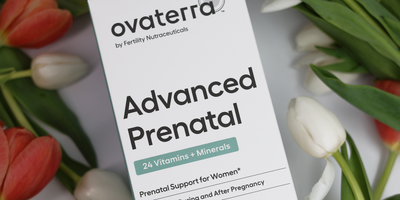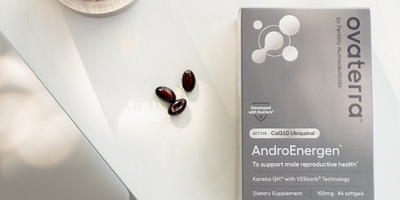Reproduction is a complex process, where each part of the reproductive organs must function properly to let conception happen and the fetus develop. This includes the cervix - the opening of the uterus at the end of your vagina.
The cervix changes its shape and size, alter the composition of the cervical fluid and keeps out pathogens to facilitate reproduction. Let’s look at the role your cervix plays in the female reproductive system and what you can do to keep your cervix healthy.
What is a cervix?
The cervix is a tunnel-like organ made of muscle at the end of the vaginal canal, connecting it to your uterus. Your cervix is an important part of your reproductive system, along with the vagina, uterus, ovaries, and fallopian tubes.
What does the cervix do in the body?
This part of the female reproductive system plays multiple roles in supporting your reproductive health. One of the functions of the cervix is to allow fluid to enter and exit the uterus.
Your cervix acts like a door to prevent unwanted objects from entering the uterus and allow some things to pass through, such as sperm. Your cervix also produces cervical mucus, which plays an important role in conception.
Menstruation
Menstruation, or your period, is the normal vaginal bleeding that occurs as part of your monthly cycle. If you have a regular cycle, it’s a sign that your body prepares itself for pregnancy roughly every month.
If no pregnancy occurs, the uterus, or womb, sheds the lining that has thickened during the luteal phase to prepare for a pregnancy. Menstrual bleeding is made of blood and tissue from inside the uterus.
During menstruation, your cervix stays open, allowing the uterine tissues and menstrual blood to exit the body. Also, your cervix usually protrudes lower, so you may find it easier to feel during your period.
Conception
Your body goes through ovulation once a month, for a chance of conception. Ovulation is an event where a mature egg is released into the fallopian tube from the ovary.
Guided by the changes in hormone levels, your cervix changes the cervical mucus’ consistency to make it easier for the sperm to successfully swim up the vagina and through the cervix, so that it can fertilize the ovulated egg. When your cervix is not adjusting the cervical mucus properly during this period, it can make it more difficult to get pregnant.
Once an embryo implants in the uterus and a pregnancy is established, the consistency of the cervical mucus changes again. It becomes thicker and stickier, better suited to keep out other sperm and pathogens that can harm the fetus.
It is important to ensure you are getting all your vitamins and minerals to support your natural reproductive health.
Pregnancy
The cervix plays an important role throughout pregnancy. During all stages of pregnancy, the cervix protects the growing baby by increasing in size and strength, which helps to keep the baby safe in the uterus.
A properly functioning cervix is vital for maintaining a pregnancy to full term, so the fetus has time to develop fully. At the end of pregnancy, however, the cervix must allow delivery, which requires it to soften, become shorter, and dilate. Like much of the rest of reproduction, timing is key; if the cervix begins to soften and open before the 37th week of pregnancy, it could result in preterm birth.
During labor, your cervix becomes dilated to allow the baby to exit the uterus and enter the world safely. The cervix will dilate to 10 centimeters before the baby can be delivered. Your cervix is in charge of when your baby will be delivered.
Menopause
Menopause refers to the time in which a woman’s menstrual cycles end, making you no longer fertile. On average, women go through menopause in their early 50s. During menopause, your cervix experiences some changes as it no longer needs to protect a growing baby or allow for conception.
During menopause, your cervix will become tighter and smaller. It also doesn’t produce as much cervical mucus because your ovaries stop producing the female hormones that trigger production of cervical mucus.
During this stage, the tissues that make up the cervix become thinner and weaker. The transformation zone, where the cervical lining changes, moves higher up and slightly inside the endocervical canal. This can make it more difficult to examine the cervix during a colposcopy. The transformation zone is where abnormalities could start to form.
Where is the cervix located?
Your cervix is located inside your pelvic cavity, between your uterus and vagina. Your cervix bulges into the uppermost part of your vagina, the ectocervix. The cervix sits in front of the rectum and anus and behind the bladder.
Your cervix's location will change at different times in your cycle and during pregnancy. During ovulation, the cervix rises to a higher level in the vagina, while it’s located lower in the vagina around the time of menstruation. When you conceive, the cervix remains in a higher position.
In addition to location, your cervix will also feel different throughout your menstrual cycle. Your cervix feels firm before your period if you don’t conceive in that cycle. When pregnant, your cervix will feel softer.
What does a cervix look like?
The cervix consists of connective tissue and muscle. It has two main parts: the endocervix (the inner part of the cervical lining) and the ectocervix (the outer part of the cervix).
There are two types of cells in the cervix; the glandular cells that line the endocervical canal and squamous cells that line the ectocervix and vagina. The different components that make up the cervix allow it to have elastic properties, which enable it to become dilated and effaced during pregnancy and to recoil after delivery.
Your cervix is one of your smaller organs, measuring only three to five centimeters thick and about two to three centimeters across. Your cervix will have slightly different appearances during your menstrual cycle.
Your cervix’s length and position change throughout your menstrual cycle, pregnancy, and sexual intercourse. During childbirth, the cervix becomes thinner during the process of effacement. This process allows the baby to move through the birth canal more easily.
Your cervix looks and feels different during the stage of your menstrual cycle, specifically when you are most fertile. You can even check your cervix to predict ovulation. When your body prepares to ovulate, your cervix will be high, soft, and open.
You can check this by inserting your fingers into the vagina to feel for the cervix. Tracking the changes in your cervical mucus is another way to know when you can get pregnant. Remember to clean your hands with soap and water before and after checking your cervix or cervical mucus.

How do you know if your cervix is healthy?
Another main function of the cervix is to keep bacteria and viruses from entering and infecting the uterus. Your vagina, much like your intestines, has an ecosystem of microbes (called vaginal microbiome). Some are beneficial, while others can be harmful. A healthy cervix prevents harmful bacteria from entering the uterus from the vagina.
The best way to know if your cervix is healthy is to see a healthcare provider for routine cervical screening. For example, they can perform a PAP smear, a reproductive health screening that can help detect abnormalities or cervical changes that could lead to cervical cancer.
What are some signs of cervical issues?
If you notice changes in your reproductive health, dig deeper into why those changes are happening. If you have started experiencing vaginal bleeding after intercourse, bloody discharge with odor, or experience pain during sex, these could all be signs that you may have issues with your cervix.
Speak to your healthcare provider if you notice any unusual changes, such as:
- Bleeding between or following periods
- Menstrual bleeding that is longer and heavier than usual
- Increase in vaginal discharge
- Unexplained bleeding after menopause
- Unexplained pelvic or back pain
It is important to be attuned to your body and when something has changed. Ignoring irregularities in your health can lead to undiagnosed cervical concerns. Keep note of changes and speak with your healthcare provider proactively about your reproductive health.
How can you check your cervical health?
Many things can influence our reproductive health. Lifestyle, hormonal changes, use of contraceptives, and even stress can impact your vaginal and cervical health. Routine checkups at your OB/GYN office can help you keep track of your reproductive health.
You can use at-home tests to check your vaginal microbiome to supplement your regular checkups. Each woman has a unique combination of bacteria and fungus in the vagina, which has been suggested to play a role in your reproductive health. Knowing your vaginal microbiome can be a valuable tool in your reproductive health toolbox.

How can you keep your cervix healthy?
HPV Vaccine
Human Papilloma Virus (HPV) is a group of more than a few hundred viruses. More than 40 of the HPV types spread through direct sexual contact. Two HPV types may cause genital warts, and approximately twelve types of HPV can cause certain types of cancer—cervical, anal, oropharyngeal, penile, vulvar, and vaginal.
According to the CDC, children and adults between 9 and 26 should get the HPV vaccine for protection from HPV. The vaccine should not be administered when you are pregnant.
Gynecological exam
During a routine pelvic exam, your doctor checks your vulva, vagina, cervix, ovaries, uterus, rectum, and pelvis for abnormalities. A Pap test screens for cervical cancer and is often performed during a pelvic exam. Regular preventative screening tests, like a Pap smear, can help keep your cervix healthy.
Your doctor may conduct a colposcopy if your results come back abnormal during a routine Pap smear. Your gynecologist will view the cervix with a magnifying glass and may decide to take a biopsy of any suspect areas. After, the biopsy will be sent to a lab for further testing.
Safe sex
Safe sex is the practice in which you use safer ways to participate in sexual intercourse to help minimize your risk of sexually transmitted infections that can cause harm to your reproductive organs. Using barriers between you and your partner, like a condom, will help protect you from your partner's bodily fluids and reduce skin-to-skin contact.
If you plan to get pregnant with your partner, the best thing to do is for both of you to get tested before having unprotected sex. Many people who contract STDs do not show noticeable signs or symptoms, but STD tests can pick up these infections.
Certain STDs can impact your reproductive health, so practicing safer sex can support your chances of becoming pregnant when the time comes.
Lifestyle changes
Of course, living a healthy lifestyle can help protect your overall health and well-being. A healthy lifestyle can help you maintain proper health within your reproductive tract. Eating a well-balanced diet, exercising, managing stress, and reducing risky behaviors (ex: unsafe sex, drugs, and alcohol) are some of the main ways to live a healthier life.
The bottom line
Your cervical health is especially important when you are planning to start a family. The cervix is a vital organ that helps you conceive and protects your baby from the moment of conception to birth.
Keep up with regular checkups to help protect your reproductive health, and bring up any cervical concerns with your doctor.
If you have questions about your cervix's health and its role in your reproductive health, pleas reach out to Ovaterra. We are here to guide you through your journey to motherhood!












